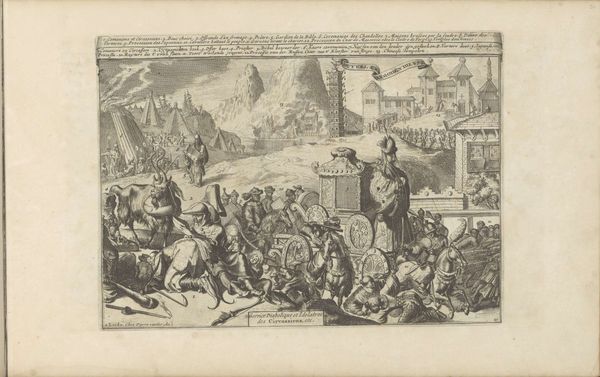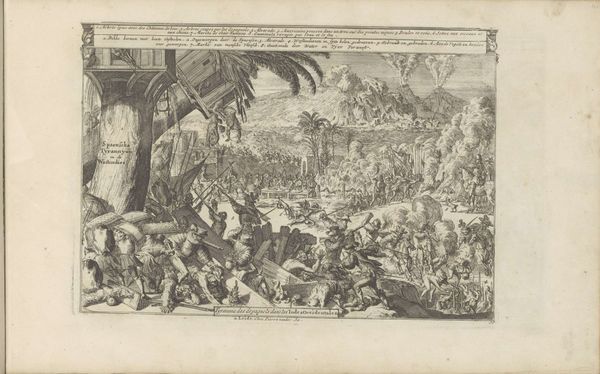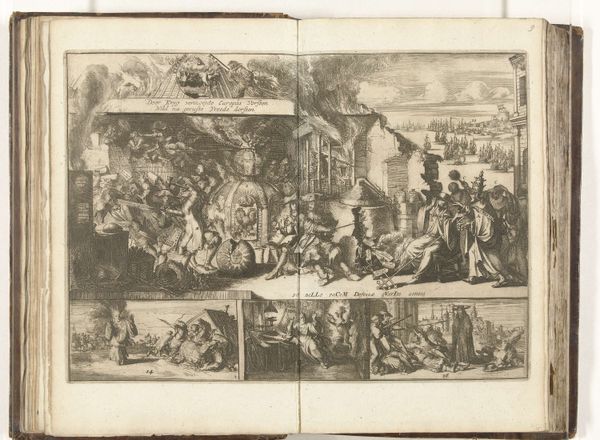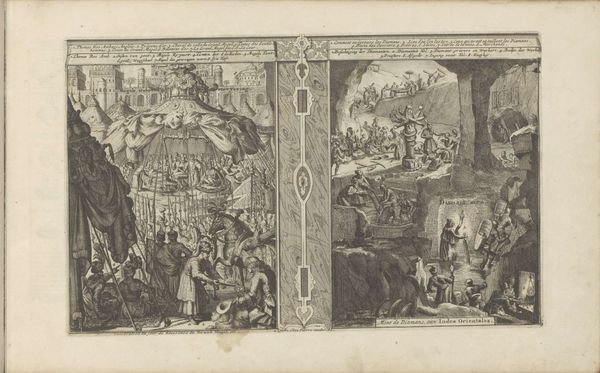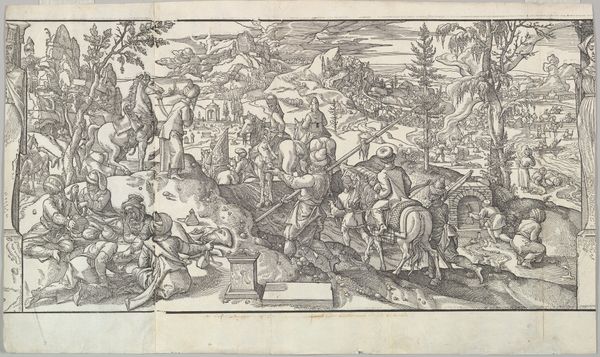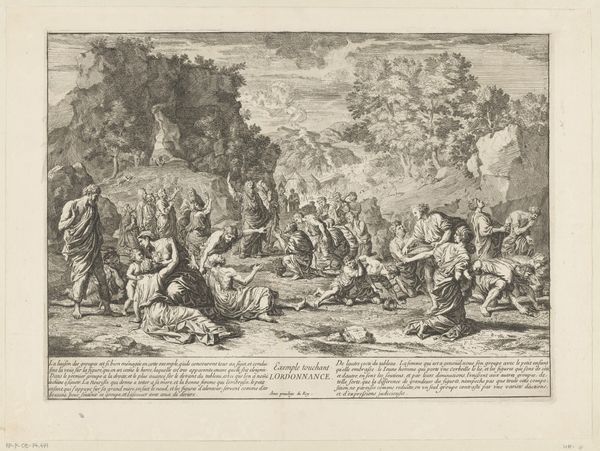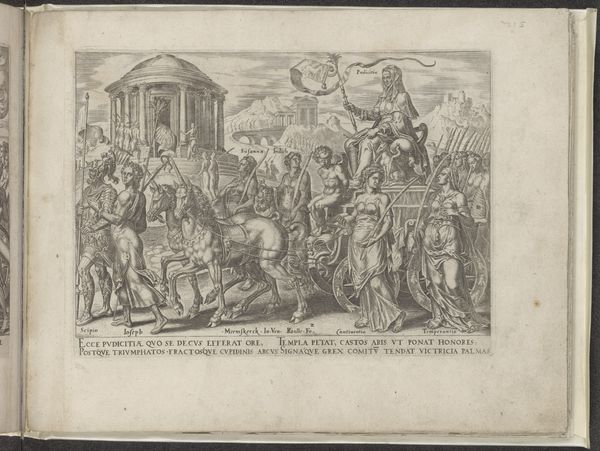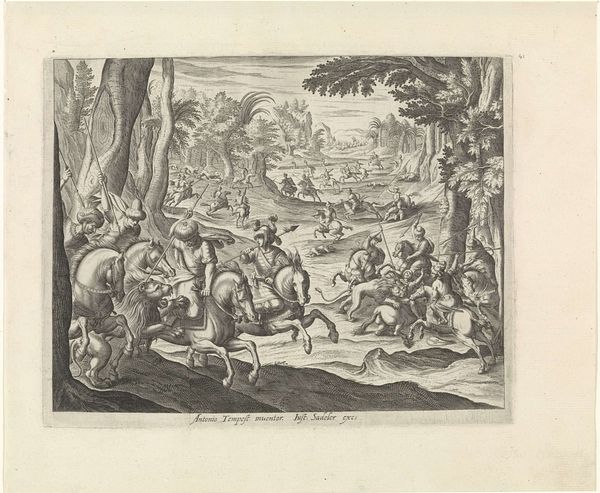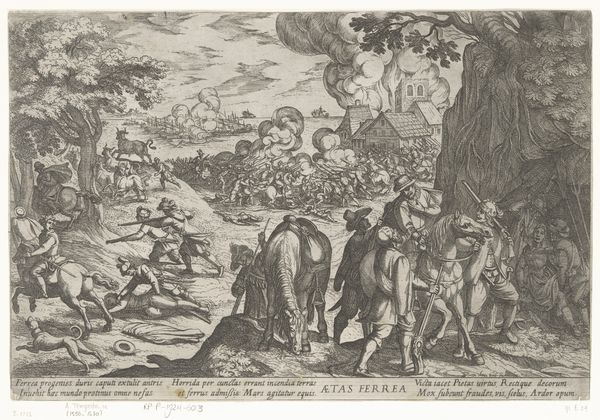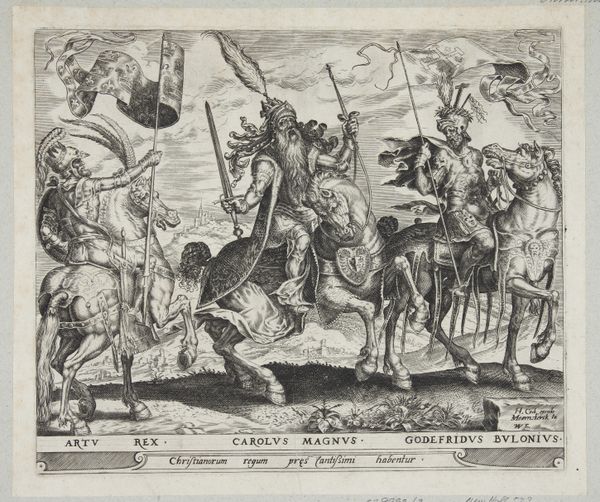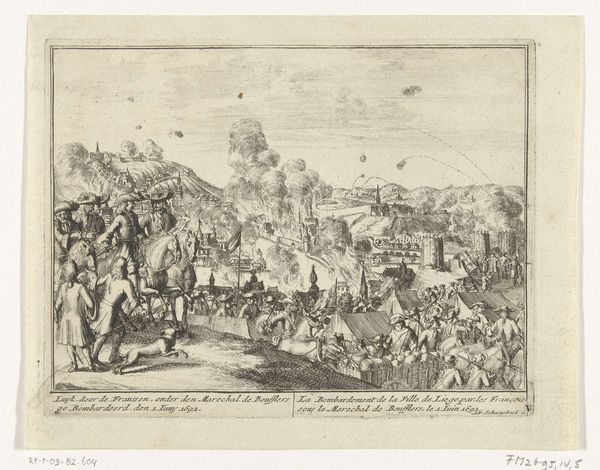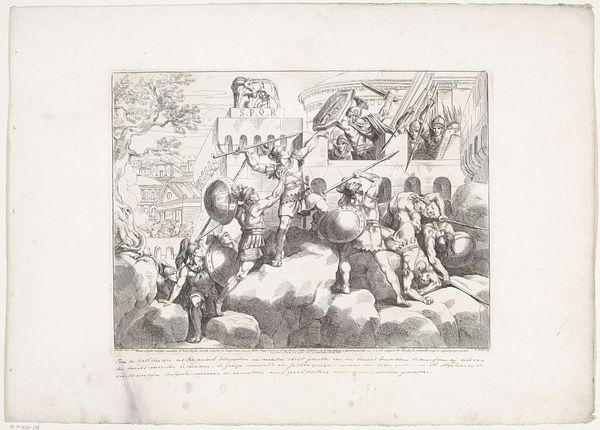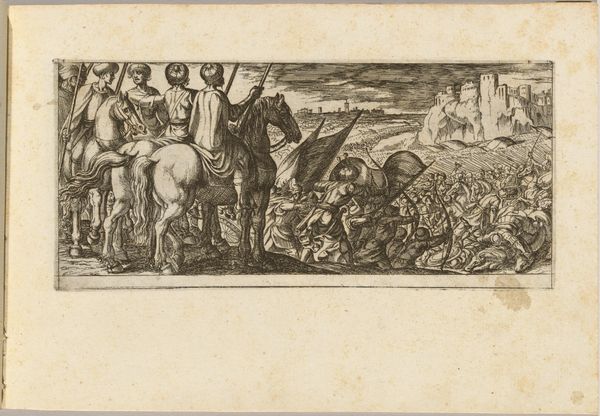
print, engraving
#
baroque
# print
#
asian-art
#
landscape
#
cityscape
#
history-painting
#
engraving
Dimensions: height 196 mm, width 314 mm
Copyright: Rijks Museum: Open Domain
Editor: We’re looking at “Beggars in the East and West Indies,” a print made sometime between 1682 and 1733 by Romeyn de Hooghe, housed here at the Rijksmuseum. It's incredibly detailed; my first impression is that it's a commentary on poverty and perhaps even a depiction of colonialism, judging by the contrast in the depicted figures. What's your interpretation of this bustling, almost chaotic scene? Curator: Chaotic indeed! But I see that chaos as a very deliberate staging. Notice how De Hooghe juxtaposes scenes of hardship – begging, labor, ritual sacrifice perhaps – with meticulous architectural backdrops, all rendered with an engraver's precision. It almost feels… theatrical. Are we meant to be spectators to this display of human suffering, or is De Hooghe implicating us somehow? What do you think that inscription means at the bottom? “These… the beginnings of evil deeds of… [unclear]? Editor: I think it has something to do with where the 'evil deeds' began, maybe pointing a finger at European involvement? The contrast between the detailed architecture and the suffering feels really intentional, as you say, like a form of… exploitation in itself, or, at the very least, objectification. Curator: Exactly. The baroque period often reveled in dramatic contrasts, and this print embodies that spirit. It's like De Hooghe is holding up a mirror, forcing us to confront the complexities – and the hypocrisies – of his era. It feels unsettlingly modern in that way, doesn't it? Does the composition, crammed with details like these, help amplify the message about over extension perhaps? Editor: I think so, and that complexity also acknowledges that colonial contexts can’t be boiled down to single perspective of 'good' or 'evil'; its complex and deeply flawed. This conversation has given me a lot to think about when examining baroque art. Curator: And for me too. This is the best type of art, don’t you agree: difficult and unresolved, always open to debate?
Comments
No comments
Be the first to comment and join the conversation on the ultimate creative platform.
